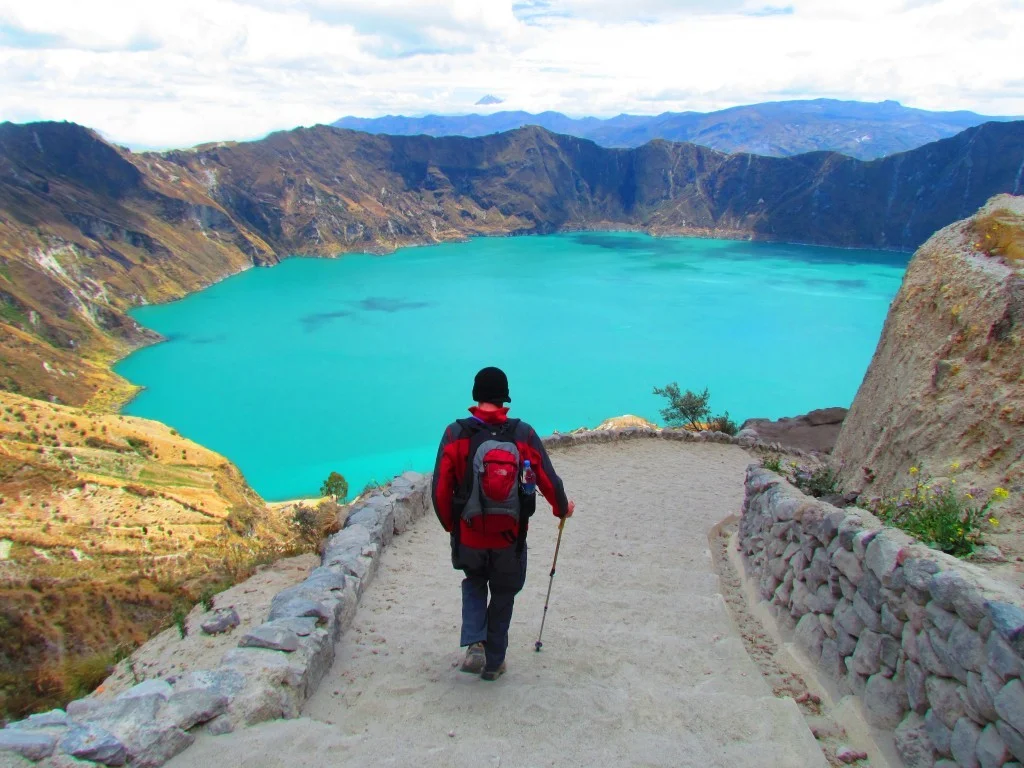Imagine a place where the wonders of nature unfold at every turn. Where the air vibrates with the songs of exotic birds, and the lush landscapes teem with diverse wildlife. Welcome to Ecuador, a country renowned for its breathtaking biodiversity. From the Amazon rainforest to the Andes mountains and the legendary Galápagos Islands. Ecuador offers a tapestry of unique ecosystems that are home to some of the most remarkable species on the planet.
For travelers and nature enthusiasts, exploring the wildlife in Ecuador is an unforgettable experience. Whether you’re captivated by the playful antics of sea lions in the Galápagos or the elusive jaguars in the Amazon. Ecuador promises a wildlife adventure like no other. This country is often described as a microcosm of South America. It provides a unique opportunity to witness species that are found nowhere else on Earth.
In this guide, we’ll take you through the best spots to see wildlife in Ecuador. Discover hidden gems and renowned locations that offer unparalleled encounters with nature. From the dense jungles of Yasuni National Park to the volcanic landscapes of Isabela Island. We’ll explore the must-visit destinations for wildlife lovers.
So, whether you’re planning a trip or just dreaming of one, get ready to immerse yourself in Ecuador’s natural wonders. Let this guide be your gateway to understanding why this country is a haven for biodiversity. And why it should be on every traveler’s bucket list. Ready to embark on this journey? Let’s dive into the first remarkable spot: the Amazon rainforest.
Explore the Amazon Rainforest’s Rich Biodiversity
The Amazon Rainforest is a treasure trove of biodiversity. Offering an unparalleled experience for those seeking to explore the wonders of nature. As one of the most biologically diverse areas on the planet, it is home to countless species of mammals, birds, reptiles, and more. Among the most notable destinations within the Amazon is Yasuni National Park. Often hailed as the most biodiverse place on Earth. This park provides incredible opportunities for wildlife viewing, including thrilling nocturnal tours where you can spot elusive creatures that come alive after dark.
For travelers yearning to witness the vibrant wildlife in Ecuador, the Amazon is an essential stop. Here, you can encounter a variety of species, from the majestic jaguar to the playful pink river dolphins. These experiences are best enjoyed with the guidance of knowledgeable tour operators who can navigate the dense jungle and reveal its hidden secrets. Guided tours not only enhance your understanding of the ecosystem but also ensure your safety and the preservation of this delicate environment.
Iconic Species of the Amazon
In the Amazon, the diversity of life is astounding. Among the many species you might encounter are the elusive jaguar, a symbol of power and mystery. These big cats are rarely seen. But with a bit of luck and the expertise of a local guide, you might catch a glimpse of one prowling through the underbrush. Another highlight is the pink river dolphin. Known for its unique coloration and playful nature. These dolphins are often seen in the riverine areas, delighting visitors with their acrobatics.
Bird enthusiasts will be thrilled by the array of avian life. Including the vibrant macaws and toucans. The Amazon is also home to numerous monkey species. Such as the howler monkey, whose calls echo through the forest. Each species plays a crucial role in the ecosystem, contributing to the rich tapestry of life that defines the Amazon.
Guided Tours: The Key to a Memorable Experience
To truly appreciate the Amazon’s biodiversity, embarking on a guided tour is highly recommended. These tours are led by experienced naturalists who can identify the myriad species and provide insights into their behaviors and habitats. Night tours offer a unique perspective, allowing you to witness nocturnal animals in their natural environment. With over 80% of the mammal species in Yasuni National Park being nocturnal, these tours are an opportunity not to be missed.
Guides also play a vital role in promoting sustainable tourism practices. By adhering to responsible guidelines, they help protect the fragile ecosystem while offering visitors an unforgettable experience. When planning your visit, consider staying at eco-lodges or participating in community-based tourism initiatives that support local conservation efforts.
Practical Tips for Visiting the Amazon
When preparing for your Amazon adventure, it’s essential to pack appropriately. Lightweight, breathable clothing is recommended, along with sturdy footwear for jungle treks. Don’t forget insect repellent and a good pair of binoculars for wildlife spotting. Booking your tour in advance is advisable, as it ensures you secure a spot with reputable guides who can tailor the experience to your interests.
For those seeking a deeper understanding of the Amazon’s ecosystems, consider participating in educational programs offered by some tour operators. These programs provide a comprehensive overview of the rainforest’s biodiversity, conservation challenges, and the cultural significance of the Amazon to indigenous communities.
Exploring the Amazon Rainforest is a journey into one of the world’s last great wildernesses. By choosing guided tours and supporting sustainable practices, you contribute to the preservation of this vital ecosystem while enjoying an adventure that will leave you with memories to cherish for a lifetime.
Discover Unique Wildlife on the Galapagos Islands
The Galapagos Islands are a paradise for nature enthusiasts, renowned for their unique and endemic species. Located about 600 miles off the coast of Ecuador, these islands offer a distinctive wildlife experience that cannot be found anywhere else on the planet. Each island in the archipelago has its own unique ecosystem, providing a diverse range of wildlife encounters.
From the iconic giant tortoises to the fascinating marine iguanas, the Galapagos Islands are a must-visit destination for anyone interested in wildlife in Ecuador. The islands are a living laboratory of evolution, where you can witness species that have adapted to their environment in extraordinary ways.
Iconic Species of the Galapagos
Among the most famous residents of the Galapagos are the giant tortoises, which can live for over a century. These gentle giants roam freely on several islands, and their conservation is a top priority for local and international organizations. Another remarkable species is the marine iguana, the only lizard in the world that forages in the sea. These iguanas can be seen basking on the rocks, warming themselves after their underwater adventures.
The Galapagos is also home to the blue-footed booby, known for its striking blue feet and unique mating dance. Birdwatchers will be thrilled by the variety of avian life, including the flightless cormorant and the waved albatross. Each species plays a crucial role in the island’s delicate ecosystem, making conservation efforts vital to their survival.
Exploring the Islands: Unique Experiences
Each island in the Galapagos offers a unique wildlife experience. On Isabela Island, the largest of the archipelago, visitors can explore volcanic landscapes and observe five different tortoise subspecies. The island’s rich marine life makes it a popular spot for snorkeling and diving, where you can encounter sea turtles, rays, and a variety of colorful fish.
Santa Cruz Island is home to the Charles Darwin Research Station, where you can learn about ongoing conservation efforts and see young tortoises being raised before their release into the wild. Meanwhile, Española Island is famous for its colony of waved albatrosses and the vibrant red and green marine iguanas.
Conservation and Responsible Tourism
Conservation is at the heart of the Galapagos experience. The islands are a UNESCO World Heritage site, and strict regulations are in place to protect the fragile ecosystems. Visitors are encouraged to engage in responsible tourism practices, such as staying on marked trails and respecting wildlife habitats.
Many tour operators offer eco-friendly tours that minimize environmental impact while providing an enriching experience. By choosing sustainable options, travelers can help preserve the Galapagos for future generations. Supporting local conservation initiatives and respecting guidelines ensures that the unique wildlife of the Galapagos continues to thrive.
For more information on planning your visit to the Galapagos and other wildlife adventures in Ecuador, explore our website.
Experience Ecuador’s Andean Wildlife
The majestic Andes mountains of Ecuador offer a unique habitat for some of the most fascinating wildlife in the country. This region is a haven for nature enthusiasts eager to witness the grandeur of the Andean condor soaring through the skies or the elusive spectacled bear roaming the rugged terrain. The Andes’ diverse ecosystems, ranging from high-altitude páramo to lush cloud forests, provide a sanctuary for these and many other species.
One of the most remarkable places to experience this biodiversity is Cotopaxi National Park. Nestled around the iconic Cotopaxi volcano, this park boasts breathtaking landscapes and exceptional wildlife viewing opportunities. Visitors can explore its vast expanses, where wild horses graze and Andean foxes can be spotted. The park’s varied terrain supports a rich array of flora and fauna, making it a must-visit destination for those interested in experiencing the unique wildlife in Ecuador.
Unique Andean Species
The Andes host a variety of species that thrive in the challenging high-altitude environment. One of the most iconic creatures is the Andean condor, the world’s largest flying bird, boasting a wingspan of over 10 feet. These magnificent birds often glide effortlessly on thermal currents, creating an unforgettable sight for anyone lucky enough to witness them.
The spectacled bear, the only bear species native to South America, also calls the Andes home. Their distinctive markings around the eyes make them easily recognizable. These primarily herbivorous bears play a vital role in the ecosystem by dispersing seeds. Spotting a spectacled bear feels incredibly rewarding due to their elusive nature and tendency to avoid humans.
Best Times to Visit Cotopaxi
For those planning a visit to Cotopaxi National Park, timing is key to maximizing wildlife sightings. The dry season, from June to September, offers the best conditions for exploring the park. During this time, the weather is generally clear, providing spectacular views of the Cotopaxi volcano and the surrounding landscapes.
Visiting during the early morning or late afternoon increases the chances of encountering wildlife, as animals are most active during these cooler periods. It’s also advisable to join guided tours led by experienced naturalists who can provide insights into the behavior and habitats of the park’s diverse species.
Travel Tips and Recommendations
When planning your journey to the Andes, consider staying at eco-friendly lodges that offer guided tours and educational programs. These accommodations often provide unique opportunities to learn about local conservation efforts and the cultural significance of the region.
Ensure you pack appropriately for the high-altitude conditions. Warm clothing, sturdy hiking boots, and sun protection are essential for a comfortable visit. Don’t forget your camera to capture the stunning landscapes and memorable wildlife encounters.
For more information on planning your wildlife adventure in Ecuador, visit our website for travel tips and recommendations.
Embark on Your Ecuadorian Wildlife Adventure
As you reflect on the captivating journey through Ecuador’s remarkable landscapes, it’s clear that this country offers an unparalleled wildlife experience. From the lush depths of the Amazon rainforest, where the elusive jaguar and playful pink river dolphins reside, to the unique ecosystems of the Galápagos Islands, home to giant tortoises and marine iguanas, Ecuador stands as a beacon of biodiversity. Each destination provides a unique glimpse into the natural world, ensuring that your visit will be filled with unforgettable encounters.
The Andes mountains further enrich this adventure, offering sightings of the majestic Andean condor and the intriguing spectacled bear. As you explore this diverse region, you’ll find that Ecuador’s wildlife is not just a spectacle but a testament to the country’s commitment to conservation and sustainable tourism. By choosing eco-friendly tours and lodges, you contribute to the preservation of these incredible ecosystems, ensuring that they remain vibrant and thriving for future generations.
Planning your trip to experience the wildlife in Ecuador is an exciting endeavor. Consider the best times to visit, such as the dry season in the Andes or the unique breeding seasons in the Galápagos, to maximize your wildlife encounters. Engaging with knowledgeable guides will enhance your experience, providing insights into the behaviors and habitats of the species you encounter. Whether you’re a seasoned traveler or embarking on your first wildlife adventure, Ecuador promises a journey that will leave a lasting impression.
Ready to start planning your adventure? Visit our website for more travel tips and recommendations. Discover the best accommodations, including the historic Mansión Alcázar, to make your stay in Ecuador truly unforgettable. Share your experiences with us on social media using #EcuadorWildlifeAdventure and join a community of travelers who have been enchanted by Ecuador’s natural wonders. Your journey awaits!




